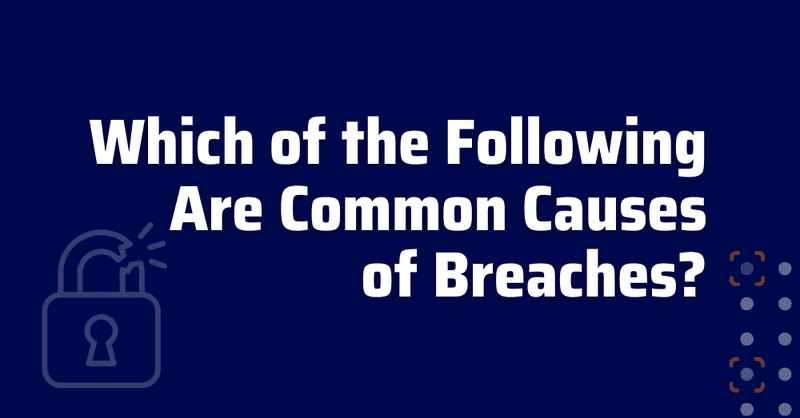In the software development landscape, breaches are less about firewalls and more about flaws in the very fabric of codebases and pipelines. So, what is a data breach from a developer’s point of view? It’s the exposure or theft of sensitive information caused not just by infrastructure flaws but by bugs, misconfigurations, and bad practices in code, CI/CD pipelines, and integrations. Let’s unpack which of the following are common causes of breaches and dig into which of the following are common causes of breaches.
What Is a Data Breach? Developer-Centric Definition
Traditional definitions focus on compromised infrastructure. However, for developers, what is a data breach means a failure in application security, misconfigured workflows, or careless code practices that expose sensitive data. An example? Hardcoded credentials are committed to a Git repository or a CI/CD job with overly broad access rights.
In CI/CD-driven development, pipelines and code are the new attack surface. This makes it crucial to shift left, treating pipeline code (such as GitHub Actions or GitLab CI configurations) as part of the application and hardening it accordingly. In practical terms, developers need to understand what is a data breach in the context of every commit, workflow, and third-party dependency.
Which of the Following are Common Causes of Breaches in Modern Dev Environments
- Insecure Defaults in CI/CD Pipelines. CI tools like Jenkins, GitHub Actions, or GitLab CI often use permissive defaults. A workflow with broad write permissions (e.g., permissions: write-all) can be hijacked if a malicious PR is approved. This is a textbook example of which of the following are common causes of breaches.
- Exposed Secrets in Repositories. Secrets such as AWS credentials, database passwords, or API tokens are often found in YAML, Dockerfiles, or source code. These can be leaked when repos are accidentally made public or scanned by attackers. In Uber’s 2022 breach, hardcoded credentials led to a serious compromise.
- Dependency Confusion and Malicious Packages. Modern apps rely heavily on third-party libraries. Typosquatting, unmaintained packages, and malicious code hidden in dependencies make this one of the less obvious but serious common causes of breaches. SBOM (Software Bill of Materials) and continuous dependency scanning are key to how to prevent data breach incidents.
- Misconfigured IAM and Access Controls. Overly permissive IAM roles in code (e.g., allowing s3:*) can grant attackers lateral movement within cloud infrastructure. Access controls embedded in code (environment variables, tokens) often lack rigorous review and automated validation.
- Reused Tokens and Public CI Access. Tokens without expiration or CI dashboards accessible without auth represent stealthy but impactful breach vectors. Leaving build logs or CI tokens in public URLs is a modern equivalent of leaving the keys in the door. This too is one of the critical answers to which of the following are common causes of breaches.
CI/CD: The New Breach Surface
CI/CD pipelines are now an active attack vector. Malicious actors exploit misconfigured jobs, permissive YAML files, injected PRs, and inherited access scopes that were never reviewed. These pipelines execute with automation-level privileges that, if compromised, can deploy malware, leak credentials, or expose sensitive assets. This shift in attack surfaces means developers must reassess what is a data breach in the CI/CD era.
Beyond default settings, a key issue is trust boundaries: pipelines often integrate external code, such as open-source packages or third-party scripts. If validation is weak or missing, this opens the door to software supply chain attacks. For instance, installing a malicious dependency during a build step can give attackers access to signing credentials or production artifacts.
Also, pipelines are rarely audited as rigorously as application code. Logs may contain secrets. Artifacts might be stored without encryption. Environment variables with elevated permissions may persist across jobs. Even the lack of runtime segmentation, where a compromised job can access another job’s workspace, can lead to lateral movement within the pipeline.
Effective how to prevent data breaches must include pipeline security testing, automated policy enforcement, and limiting job scopes. Developers should treat CI/CD definitions as code that must undergo review, scanning, and permission hardening.
Ultimately, treating pipelines as first-class citizens in the software architecture and securing them as aggressively as the application itself is critical. It’s not just about what you build, it’s about how you build it.
Dev-First Strategies to Prevent Data Breaches
To understand how to prevent data breach incidents from a developer’s perspective, it’s essential to move beyond reactive patches and implement security controls directly in the development workflow. Dev-first security means integrating protective practices where developers work: in code, in CI pipelines, and in dependency management systems.
Start by embedding permission validation in your CI configuration. Use automation to scan workflow definitions for over-permissive settings and prevent merges unless all steps follow the principle of least privilege. This preemptive action directly addresses how to prevent data breach through workflow hardening.
Secrets management is another area where developers must take control. Avoid storing credentials or tokens in source code. Implement secret detection tools in pre-commit hooks and CI checks to catch mistakes before they make it to the repository. Pair this with secret vaulting solutions like AWS Secrets Manager or HashiCorp Vault and integrate secret rotation into your deployment processes.
Internal scripts, whether bash, Python, or Node.js, should be treated as critical assets. Review them for risky operations such as shell injection, improper file handling, or unsafe use of environment variables. Use static analysis tools and enforce peer reviews for all operational or deployment scripts.
Access control policies should be written in infrastructure as code (IaC) tools, not manually applied in cloud consoles. This enables version control, auditability, and automated validation. Tools like AWS IAM Access Analyzer or Open Policy Agent can help validate these permissions at the code level before deployment. This is another example of how to prevent data breach via code-first IAM verification.
Lastly, visibility into software dependencies is vital. Generate SBOMs automatically as part of your build process and track them continuously. This allows for fast identification of unmaintained or malicious packages. Augment vulnerability scanning with tools that flag suspicious behaviors like network calls or obfuscated code in third-party libraries.
By building these practices into everyday developer workflows, you not only answer the question of how to prevent data breach, but you also reduce friction and encourage secure coding habits. Security becomes a natural extension of development, not a roadblock. All of these practices directly reduce the common causes of breaches.
Real-World Breaches From Pipelines and Code
- Uber 2022: Attackers gained access to Uber’s internal systems after discovering hardcoded AWS credentials exposed in a private GitHub repository. Once inside, they moved laterally across services using reused access tokens and poorly scoped IAM roles. This case shows how a single mistake in code exposure can escalate to a full compromise and is a vivid illustration of what is a data breach caused by common development oversights.
- Equifax: One of the most high-profile breaches in history, Equifax suffered due to its failure to patch a known vulnerability in Apache Struts. While the CVE was public, their CI/CD pipeline lacked automated scanning and patch management processes, leading to months of unpatched exposure. Attackers exploited this to access sensitive PII of millions, showing which of the following are common causes of breaches in legacy code pipelines.
- Codecov 2021: A malicious actor modified Codecov’s Bash uploader script, which was widely used in CI pipelines. By injecting code into the script, they exfiltrated environment variables (which often included tokens and credentials) from thousands of customer environments. This breach highlights the risks of pulling scripts from external sources without integrity verification and offers insight into how to prevent data breaches by validating external dependencies.
- SolarWinds: The infamous supply chain attack targeted the CI/CD system of SolarWinds. Attackers inserted malware into the build artifacts of Orion software, which was then distributed to customers as trusted updates. The breach revealed deep issues with build integrity and a lack of behavioral monitoring during artifact creation, another strong example of what a data breach originating from within the pipeline itself.
- GitHub Actions Misuse: Multiple incidents have shown how attackers can exploit overly permissive GitHub Actions workflows. For instance, attackers submitted PRs with malicious code that executed with elevated permissions due to poor scoping in permissions: fields. These cases underscore the importance of job isolation and workflow validation and demonstrate which of the following are common causes of breaches related to CI security misconfigurations.
Each of these real-world examples demonstrates which of the following are common causes of breaches, from secrets in code and unpatched vulnerabilities to pipeline misuse and dependency manipulation. They also reinforce the urgency of implementing robust controls as part of a comprehensive how to prevent data breach strategy.
How Xygeni Helps Prevent Developer-Driven Data Breaches
Xygeni provides real-time pipeline security by integrating directly into GitHub Actions, GitLab CI, and Jenkins. It scans YAML for insecure defaults, verifies permission scopes, and detects secrets before they hit your remote. Its IAM validation tools audit permission usage from within the codebase, not just in the cloud console.
For dependencies, Xygeni offers continuous SBOM tracking and flags malicious or vulnerable packages before they make it into production. It monitors token use, alerts on reuse, and identifies public exposure in CI/CD environments.
In short, Xygeni enables a developer-first approach to how to prevent data breach threats by catching issues early and fixing them where they start, in code. Its automation is built to counter the common causes of breaches by detecting insecure defaults and hidden risks.
Secure Code, Secure Pipelines, Prevent Breaches
To truly grasp what is a data breach, developers must look beyond firewalls and focus on code, pipelines, and access layers. By understanding which of the following are common causes of breaches, teams can shift security left and build resilience directly into their workflows.
Whether through better dependency hygiene, automated permission checks, or secret scanning, the path to how to prevent data breach events starts in the developer’s IDE and CI pipeline. Tools like Xygeni make this practical and effective, turning pipelines from weak points into strongholds. In doing so, they help eliminate the most common causes of breaches in today’s software supply chain.

